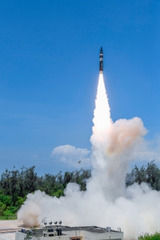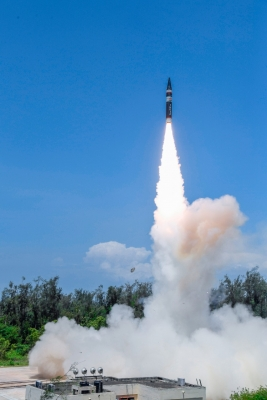

New Delhi, June 30 (IANS) India is speeding up efforts to develop advanced bunker-buster warheads as part of a variant of the Agni missile system that is capable of penetrating high-value enemy targets that are fortified deep under the ground and cannot be destroyed with conventional weapons.
The move, which was already on the cards, has been expedited following the success of the US strikes against Iran’s nuclear facilities that were buried deep beneath the earth in the mountainside and covered with reinforced concrete, according to media reports.
However, unlike the US bunker-buster bombs that were delivered by the B2 stealth bombers, the Indian version will be carried as a warhead on the Agni missile. India is opting for a missile-based delivery system as it reduces costs and enhances operational flexibility.
The Defence Research and Development Organisation (DRDO) is understood to be developing a modified version of the Agni-5 intercontinental ballistic missile. While the earlier Agni version has a range exceeding 5,000 kilometres and typically carries nuclear warheads, the new variant will be a conventional weapon capable of carrying a heavier 7,500 kilogram bunker-buster warhead.
Designed to strike hardened enemy facilities buried beneath layers of reinforced concrete, the missile is expected to penetrate 80 to 100 metres underground before detonation. The new bunker-buster warheads will play a crucial role in targeting command-and-control centres, missile silos, and critical military infrastructure in enemy territory.
Two new variants of the Agni-5 are reported to be under development. While one is being designed for an airburst warhead for targets above the ground, such as airfield runways and enemy tanks, the other will have the capability to penetrate deep into hardened subterranean infrastructure - similar to America’s GBU-57, bunker-buster bomb.
The range of these warheads is expected to be limited to 2,500 kilometres compared to the 5,000 km range of the original Agni-5 because of their heavier weight. However, this is considered sufficient for the specific nature of their use.
The missiles are expected to reach speeds between Mach 8 and Mach 20, classifying them as hypersonic weapons with significantly enhanced payloads.
--IANS
sps/vd